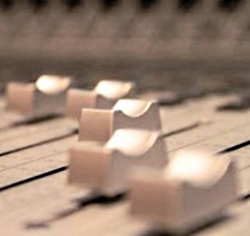One of the tougher things to decide when your doing a project is when the mix is finished.
If you have a deadline, the decision is quickly made for you, but if you have a deep pocket budget or unlimited time, a mix can drag on forever.
So when is a mix considered finished? Here are some guidelines, courtesy of The Mixing Engineer’s Handbook:
1) The groove of the song is solid. The groove usually comes from the rhythm section, but it might be from an element like a rhythm guitar (like on the Police’s Every Breath You Take) or just the bass by itself, like anything from the Detroit Motown that James Jamerson played on (Marvin Gaye’s What’s Goin’ On or The Four Tops’ Reach Out, I’ll Be There and Bernadette for instance). Whatever element supplies the groove, it has to be emphasized so that the listener can feel it.
2) You can distinctly hear every instrument. Every instrument must have its own frequency range to be heard. Depending upon the arrangement, this is what usually takes the most time during mixing.
3) Every lyric, and every note of every line or solo can be heard. You don’t want a single note buried. It all has to be crystal clear. Use your automation. That’s what it was made for.
4) The mix has punch. The relationship between the bass and drums is in the right proportion and work together well to give the song a solid foundation.
5) The mix has a focal point. What’s the most important element of the song? Make sure it’s obvious to the listener.
6) The mix has contrast. If you have the same amount of the same effect on everything (a trait I hear from so many neophyte mixers), the mix will sound washed out. You have to have contrast between different elements, from dry to wet, to give the mix depth.
7) All noises and glitches are eliminated. This means any count-offs, singer’s breaths that seem out of place or predominate because of vocal compression, amp noise on guitar tracks before and after the guitar is playing, bad sounding edits, and anything else that might take the listener’s attention away from the track.
8) You can play your mix against songs that you love, and it holds up. Perhaps the ultimate test. If you can get your mix in the same ball park as many of your favorites (either things you’ve mixed or from other artists) after you’ve passed the previous seven items, then you’re probably home free.
In the end, it’s best to figure at least a full day per song regardless of whether you’re mixing in the box or on an analog console, although it’s still best to figure a day and a half per mix if you’re mixing in a studio with an analog-style console.
Of course, if you’re mixing every session as you go along recording, then you might be finished before you know it as you just tweak your mix a little.
Bobby Owsinski is an author, producer, music industry veteran and technical consultant who has written numerous books covering all aspects of audio recording. For more information be sure to check out his website and blog.
















